If the uranium price has bottomed, these are the major uranium stocks and ETFs to watch
In an article I published Tuesday, I pondered whether the Russian ban on enriched uranium to the US is likely to be the catalyst that ASX uranium stocks need to turnaround their generally poor share price performances since May.
Certainly, it has been a busy few months for most Australian based uranium stocks as many progress projects towards production as soon as possible to allow them to take advantage of what’s left of 2023’s bull market in the uranium price.
In this article, we’ll check in on the key ASX listed uranium companies as well as several key international players. What have they been up to recently and what are the likely key near-and-long-term drivers of their success?
Then, at the end of the article (technical analysts – you can simply scroll straight to the bottom for the video! 📺), we'll investigate what the charts of these uranium stocks, as well as four ASX and international uranium ETFs, say about whether investors are flocking in or flooding out of the uranium sector.
ASX URANIUM STOCKS TO WATCH
Let’s kick off with the Top 10 ASX uranium companies by market capitalisation (listed below from largest to smallest). We’ll close by checking in on three major international uranium companies in Kazatomprom, Cameco, and Nexgen Energy.
Paladin Energy (ASX: PDN)
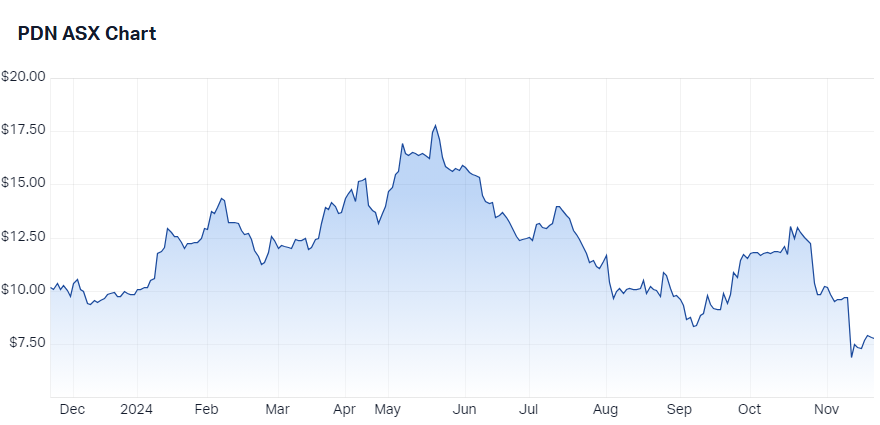
It’s fair to say that over the past three months, Paladin Energy has faced significant challenges. Earlier this month, the company warned of several major issues impacting production at its flagship Langer Heinrich Mine in Namibia. It also cut its FY2025 production guidance from 4.0–4.5 million pounds to 3.0–3.6 million pounds of uranium. Paladin Energy’s share price plunged 29% on the news.
The company is also struggling to bed down its proposed acquisition of Canada's Fission Uranium (TSX: FCU) for C$1.14 billion. The takeover announced in June, aims to transform Paladin Energy into a two-mine-two-geographic region company.
Fission Energy’s flagship Patterson Lake South (PLS) project is at an advanced stage of development, likely to commence production in 2029. PLS is forecast to produce 91Mlb U3O8 at a very low operating cost of C$13.02/lb over its 10-year mine life.
In news out Wednesday, the Canadian Government has extended the period of its national security review regarding the takeover. Brokers at Canaccord Genuity noted that because of this development, the market is now ascribing a greater probability to the deal not proceeding. If this turns out to be the case, it would reduce the broker’s price target for Paladin Energy to $12 from $15.20.
Silex Systems (ASX: SLX)
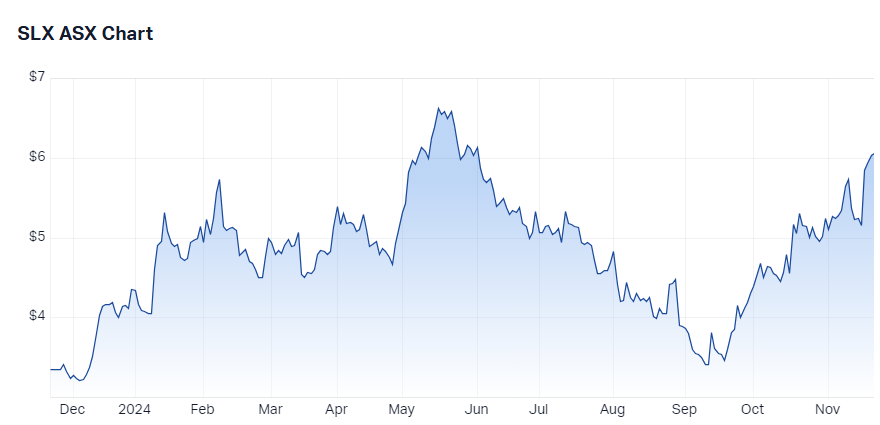
Over the past three months, Silex Systems has made significant progress in commercialising its laser SILEX laser enrichment technology. The technology aims to enrich uranium for use in traditional and next-generation small modular reactors (“SMR”) more efficiently and at a lower cost compared to current enrichment methods.
Silex owns a 51% stake (49% Cameco) in GLE which is the company aiming to commercialise the technology.
In October, Silex announced GLE had completed work on its Pilot Demonstration Facility, complete with two full-scale laser system modules. Preparations are being made for the commencement of enrichment testing.
Additionally, Silex secured a $5.1 million grant under the Australian Government’s Defence Trailblazer Program to advance the design and construction of its Zero-Spin Silicon (ZS-Si) project, aimed at producing high-purity silicon for quantum computing.
Given the key issue for the global uranium supply chain over the next few years is more likely to be centred around enrichment and not the supply of uranium ore, Silex proprietary technologies are likely to be closely watched by investors.
Boss Energy (ASX: BOE)
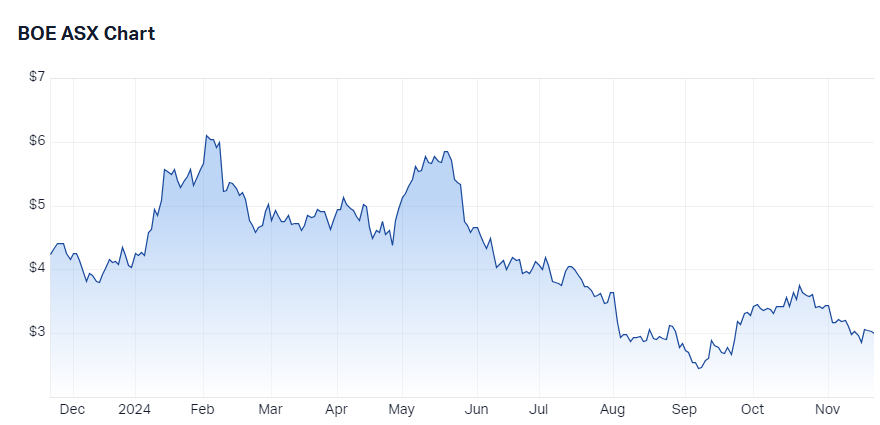
In the past three months, Boss Energy has made notable strides in its uranium production capabilities. In October, the company announced the ramping up operations at its flagship Honeymoon Uranium Project in South Australia remain on track, helping it achieve production of 89,516lb worth of uranium oxide in the September quarter.
The commissioning of the final components at Honeymoon are also proceeding as planned and should enable the company to achieve the mine’s nameplate capacity of 2.45Mlbpa by the middle of next year.
Additionally, Boss Energy advanced its 30% owned Alta Mesa project (70% enCore Energy) in Texas, bringing the first ion exchange plant online. Two other ion exchange plants are due to commence production shortly.
Deep Yellow (ASX: DYL)
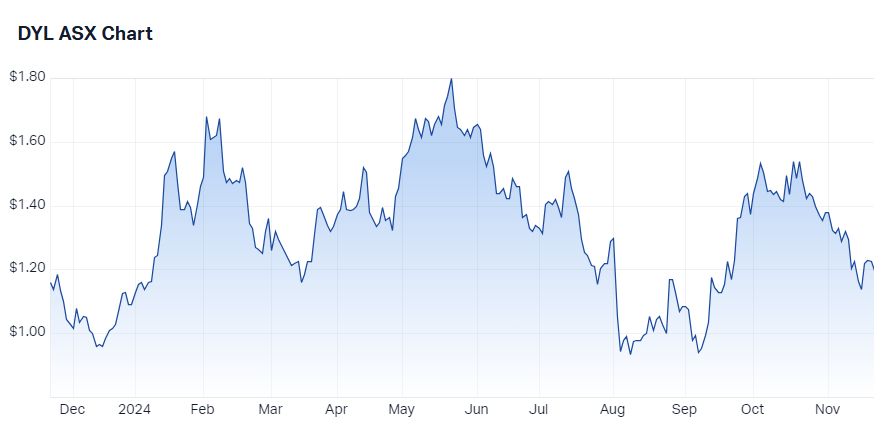
Over the past three months, Deep Yellow Limited has achieved significant milestones in its uranium development initiatives. The company secured a mining licence from the Namibian government for its flagship Tumas Project, marking a pivotal step toward production.
Subsequently, Deep Yellow appointed Ausenco Services as the project engineer and Nedbank as the lead arranger for project financing, with a Final Investment Decision anticipated by the end of this year.
If all goes to plan, Deep Yellow plans to begin construction at Tumas early next year with production to commence in late 2026. The company forecasts annual production of up to 3.6Mlb U3O8 per year at a C1 cash cost of US$34/lb over a 22.5-year mine life.
In May, the company completed a substantial equity raise of A$250 million, bolstering its financial position.
Bannerman Energy (ASX: BMN)
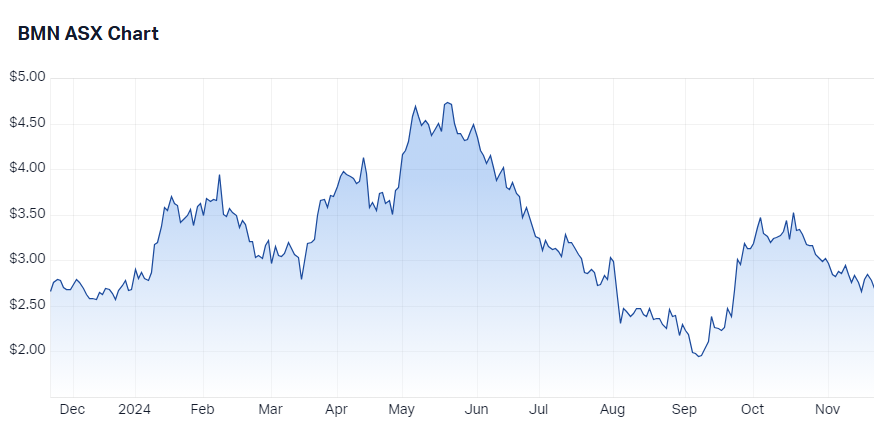
Over the past three months, Bannerman Energy has made significant progress in advancing its Etango Uranium Project in Namibia. It has completed the first phase of early works including road access and water supply.
It is progressing with other early construction works and ordering long-lead time items, as well as securing relevant financing and offtake agreements. Bannerman says it is progressing towards a Final Investment Decision for Etango-8 in 2025.
When fully operational, the company forecasts Etango will produce 3.5Mlbs U3O8 per year at a cash cost of US$35/lb over a 15-year mine life.
In June 2024, the company successfully raised A$85 million through a two-tranche placement, bolstering its cash reserves to approximately A$100 million. These funds are earmarked for the development of the Etango-8 project and general working capital.
Lotus Resources (ASX: LOT)
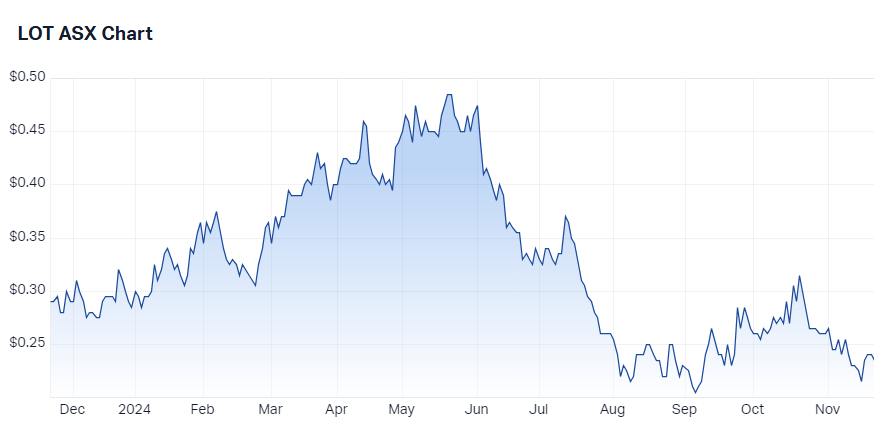
Over the past three months, Lotus Resources has made significant strides in advancing its 85%-owned Kayelekera uranium project in Malawi. Kayelekera is a brownfield (restart) project in advanced stages of recommencement, with first production forecast for the third quarter of next year.
Revised initial restart capital expenditure of US$50 million and is fully funded by the company’s recent $130 million capital raise. Once in production, Kayelekera is forecast to produce 2.4Mlb U3O8 per year on average at a cash cost of US$34.50/lb over a 10-year mine life.
Lotus Resources had a cash balance on 30 September of $15.7 million compared to a negative operating cash flow of $1.5 million for the September quarter.
Peninsula Energy (ASX: PEN)
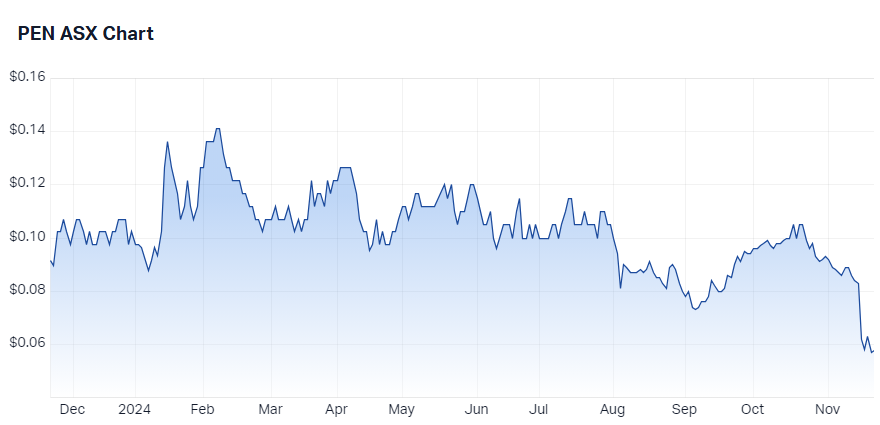
Over the past three months, Peninsula Energy has faced significant challenges impacting its share price. Last month, the company reported a substantial increase in pre-production costs for the expansion of the Ross Central Processing Plant at its Lance uranium project in Wyoming.
The cost of the plant is expected to be US$9.5 million higher compared to initial life-of-mine estimates. In the same update, the company also cut its 2025 ramp up production profile by up to one-third to 600klb from 700klb-900klb. These developments have increased concerns about the Lance’s economics and timelines.
Additionally, operational setbacks, including delays in securing necessary permits and supply chain disruptions, have further hindered progress at Lance. These developments have adversely affected investor confidence, contributing to a significant decline in the company’s share price.
Still, Peninsula Energy expects to produce 3.2-3.6Mlb U3O8 at Lance by the end of 2027 (down from the previous 3.5-4.1Mlb guidance). As per the company’s August 2022 Definitive Feasibility Study annual production at Lance is forecast to be 1Mlb per year at a cash cost of US$39/lb over a 14-year mine life.
The company notes it had an unaudited cash balance on 31 October of approximately US$68 million and that it “is funded well beyond first production”.
Alligator Energy (ASX: AGE)
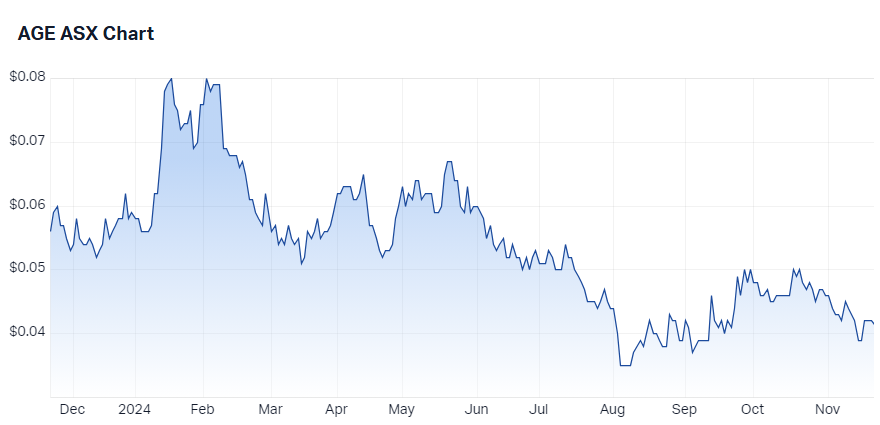
Over the past three months, Alligator Energy has advanced its exploration activities at its flagship Samphire project in South Australia. Drilling continues at the project to extend the resource, as well as ongoing permitting and planning for a pilot plant conduct various feasibility studies.
A drilling campaign completed in October helped Alligator Energy increase the Indicated Mineral Resource Estimate (“MRE”) for Samphire by 21% to 12.9Mlb U3O8 at an average grade of 754ppm.
In September, the company raised $25.5 million through an institutional placement to fund the development of its uranium projects. In the September quarter, the company had a negative net operating cash flow of $666,000.
Aura Energy (ASX: AEE)
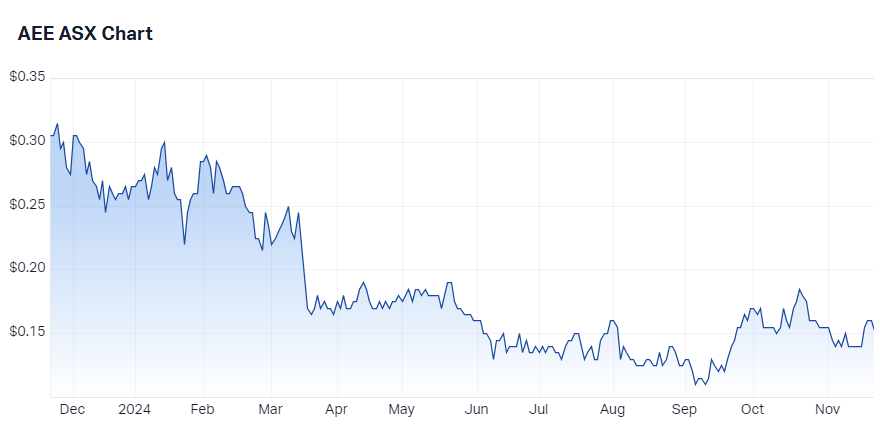
Over the past three months, Aura Energy Limited has made significant progress in advancing its flagship Tiris Uranium Project in Mauritania.
In September, the company announced an updated production target for Tiris, stating that it now aims to extend the mine life to 25 years. It also reported improved project economics including annual production increasing to 1.9Mlb per year (up from 1.87Mlb) at a C1 cash cost of US$30.10/lb (down from US$31.40/lb) for a 25-year mine life (up from 17-years).
Additionally, Aura Energy has been actively engaging with the Swedish government regarding its Häggån Project, as Sweden considers lifting its domestic uranium mining ban.
Earlier this week, Aura Energy requested a trading halt on its share be removed to allow it to finalise a “project update” to the market, saying “Further work on the project update is required which we estimate will be completed within approximately a month and an announcement will be made at that point.”
Aura Energy had a cash balance on 30 September of $15.7 million compared to a negative operating cash flow of $1.5 million for the September quarter.
Elevate Uranium (ASX: EL8)
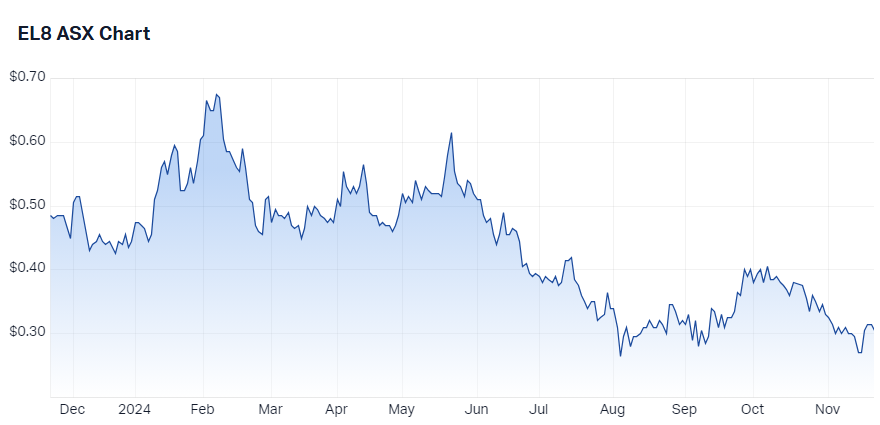
Over the past three months, Elevate Uranium has continued to progress exploration at its flagship Koppies Uranium Project in Namibia.
In October, the company announced a substantial 136% increase in the resource estimate for at Koppies, bringing total Mineral Resources to 66.1Mlb U3O8 (43.6Mlb Indicated, 22.5Mlb Inferred).
In its latest September Quarter Activities and Cash Flow update, Elevate noted it had $7.14 million cash in the bank versus a negative net operating outflow for the quarter of $3.49 million.
GLOBAL URANIUM STOCKS TO WATCH
Kazatomprom and Cameco are ranked number one and number two in the world respectively for uranium production. Together, they account for around two-fifths of global uranium supply. They are arguably compulsory additions to any global lithium stocks review.
Nexgen Energy is not a producer yet, but it is working towards production at its flagship Rook I operation in Canada by early 2028. Once in full swing, Rook I is expected to elevate Nexgen to a top 10 global uranium producer. It’s also included here because it is listed on the ASX.
Kazatomprom (LSE: KAP)
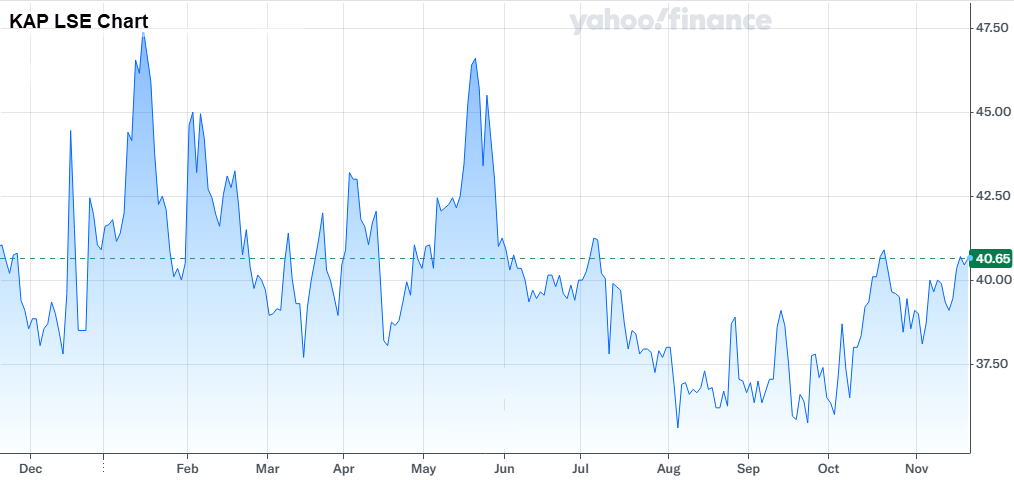
Over the past three months, Kazatomprom, the world's largest uranium producer, has undertaken significant strategic initiatives. In November, the company secured an exclusive six-year licence for uranium exploration at the Severnoye block of Kazakhstan's Budenovskoye deposit, with inferred resources estimated at over 100kt U3O8.
Additionally, Kazatomprom finalised major contracts with China's CNNC Overseas and China National Uranium Corporation, aiming to bolster Kazakhstan's role in the global nuclear market by ensuring a stable uranium supply to China.
More broadly speaking, it’s worth noting that Kazatomprom has faced significant production challenges through 2023 and into 2024. In August 2024, the company announced a 17% reduction in its 2025 production target, citing project delays and shortages of sulphuric acid, a critical reagent in uranium extraction. This cut represents approximately 20% of current global uranium supply.
Kazatomprom's production downgrade underscores the fragility of supply chains in the uranium sector and raises questions about the industry's ability to meet growing demand.
Cameco Corporation (TSX: CCO, NYSE: CCJ)
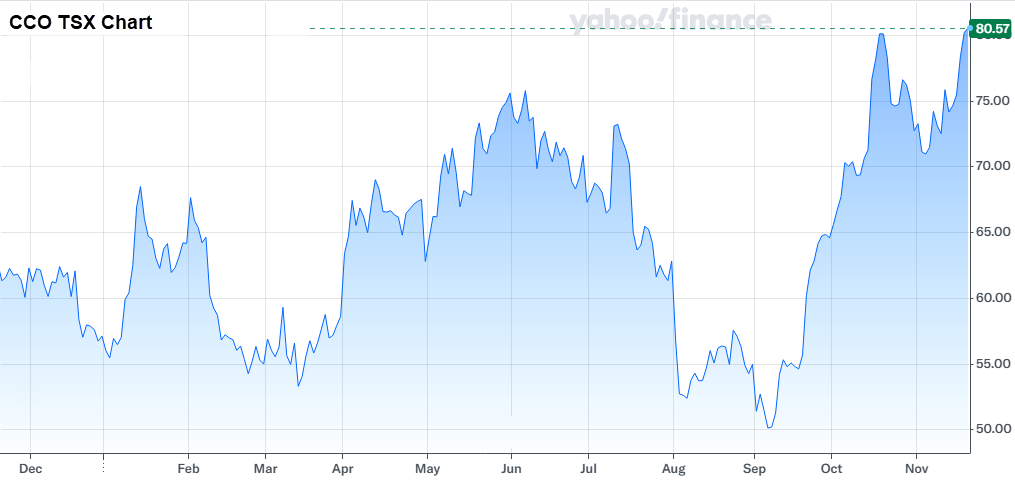
Over the past three months, Cameco Corporation has experienced notable developments in its operations and financial performance.
In November, the company reported a third-quarter loss but raised its full-year revenue guidance and dividend forecast, reflecting confidence in its long-term prospects. September quarter production of 4.3Mlb U3O8 was below most analysts' expectations, but Cameco managed to increase its full-year production guidance to 23.1Mlb U3O8.
Despite the earnings miss, the other positive factors lead to Cameco's shares gaining 6% on its September quarter results, indicating substantial investor optimism over its prospects.
In the past three months, Cameco Corporation has also faced notable production challenges, particularly at its Cigar Lake mine, where equipment reliability issues led to a downward revision of the 2023 production forecast.
Additionally, the company's joint venture in Kazakhstan, JV Inkai, continues to experience procurement and supply chain issues, particularly concerning sulfuric acid. These issues will cause Cameco to increase its market purchases of uranium from 2Mlb previously to 3Mlb for calendar year 2024.
Nexgen Energy (TSX: NXE, NYSE: NXE, ASX: NXG)
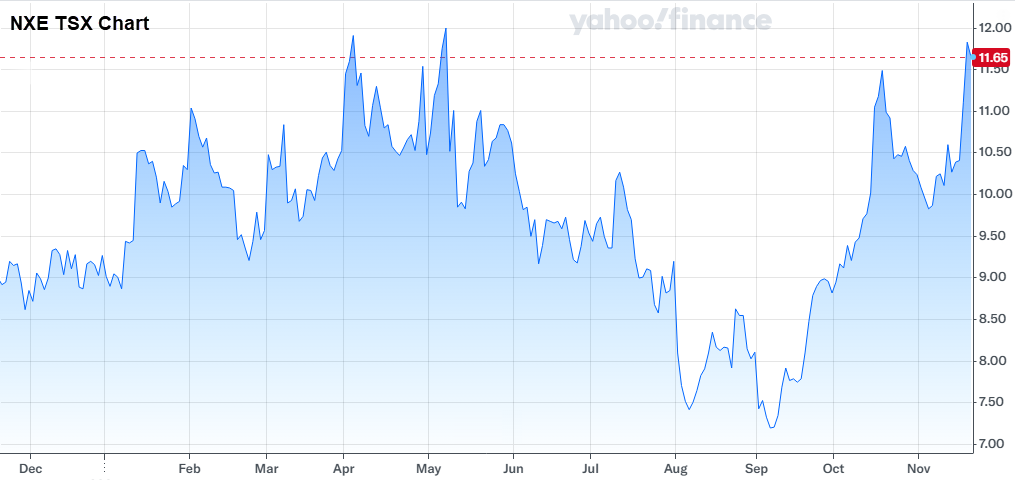
Over the past three months, NexGen Energy has advanced its Rook I Project in Canada’s Saskatchewan's Athabasca Basin. In August, the company reported its most significant drill hole to date, RK-24-207, indicating a substantial expansion of the mineralized zone at Patterson Corridor East.
Additionally, NexGen updated the project's economics, revising the pre-production capital cost estimate to C$2.2 billion, reflecting a 70% increase from the 2021 feasibility study.
In June, the Canadian Nuclear Safety Commission completed its review of NexGen's Environmental Impact Statement, marking a key step toward regulatory approval.
When up and running in 2029, Rook I is forecast by Nexgen Energy to produce up to 30Mlb U3O8 per year for the first 5-years at a cash cost of C$13.86/lb over a 11-year mine life. (Note: In theory, Rook I could buy the largest producing mine in the world when operational).
URANIUM, PLUS ASX & GLOBAL URANIUM STOCKS & ETFs TECHNICAL ANALYSIS REVIEW
Uranium and ASX & global uranium stocks and ETFs technical analysis review video
Note: This video was filmed Thursday 21 November during regular ASX trading hours. Some of the charts therefore have changed since then. I intend to provide regular updates to keep investors appraised of developments in the technicals in this sector down the track.
IMPORTANT DISCLAIMER: The content of this presentation is general in nature, does not constitute a recommendation, and does not take into account your financial situation, personal objectives or needs. Before acting upon any of the information in this presentation, you should consider it carefully, and then consider your objectives, financial situation and needs and take all reasonable steps to fully understand the possible outcomes of trades and strategies that can be employed. We recommend you seek independent financial advice to ensure that any information provided here is suited to your financial situation and requirements. Market Index and its data suppliers accept no responsibility for any claim, loss or damage as a result of information in this video. All information in this video is provided "as is" and without warranties of any kind either express or implied and is not intended for trading purposes.
This article first appeared on Market Index on Thursday 21 November 2024.
5 topics
16 stocks mentioned

